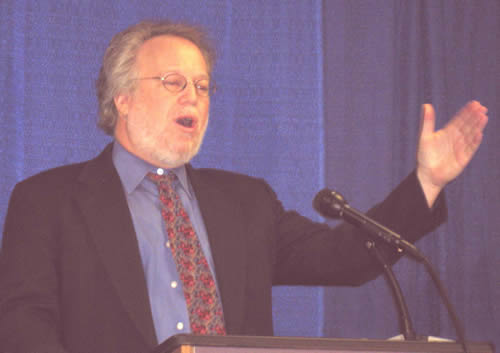Exactly How Does the Big Labor-Funded Economic Policy Institute Incorporate Interstate Differences in Living Costs Into Its Data?

State Rep. Ron Maag says employees earn more money in ‘right-to .

Union-label “think tank” chief Lawrence Mishel claims that, whether you assume the cost of living in forced-unionism states is on average 18.1% higher than in Right to Work states, or just 8.4% higher, it makes virtually no difference in calculating cost of living-adjusted wages in the two types of states. Image: www.sharedprosperity.org
Two years ago this February, the Washington, D.C.-based Economic Policy Institute (EPI), which acknowledges it gets a very substantial share of its funding from forced dues-fueled union treasuries, issued a report comparing employee compensation in Right to Work and compulsory-unionism states.
Frequently, data cited by Big Labor partisans comparing wages and salaries and other forms of income in Right to Work states and non-Right to Work states do not incorporate interstate differences in the cost of living in any way. This is a serious flaw, because cost-of-living indices for the 50 states calculated and published over the years by nonpartisan groups such as the Jefferson City-based Missouri Economic Research and Information Center (MERIC) show that, on average, the cost of living (incorporating necessities like housing, food, energy, transportation and health care) in forced-unionism states is roughly 20% higher than in Right to Work states.
The EPI’s February 2011 study does not suffer from this particular flaw. But the way in which it adjusts employee pay in forced-unionism and Right to Work states for cost-of-living differences is very curious indeed.
Authors Heidi Shierholz and Elise Gould incorporate two different cost-of-living indices into their analysis, one by the aforementioned MERIC and one by the Amherst, Mass.-based Political Economy Research Institute (PERI), a think tank that, like the EPI, has a strongly pro-forced unionism orientation.
Basic math dictates that the EPI’s results would differ substantially depending on which indices they used. PERI’s indices, which are rarely cited by either scholars or laymen comparing the economic performance of different regions in the U.S., show an average cost of living in forced-unionism states that is just 8.4% higher than in Right to Work states. MERIC’s widely-cited indices, according to the EPI’s analysis, show the average cost of living in forced-unionism states is 18.1% higher than in Right to Works states.
The EPI concludes (not surprisingly given both its ideological orientation and its funding sources) that the average employee’s pay in forced-unionism states, adjusting for cost of living and a host of other factors (many of them not specifically identified in the study), is higher than the average in Right to Work states. But only by 3.2%. Therefore, a layman looking at the data would have to conclude that, had the EPI used MERIC only to adjust for cost of living, rather than PERI and MERIC or PERI only, its study would have shown a correlation between Right to Work status and higher employee pay, albeit perhaps by a small margin.
With this thought in mind, the week after the EPI study came out I sent EPI President Lawrence Mishel an email asking him exactly how the EPI had incorporated state cost-of-living differences into its study. To my amazement, Mishel responded that the EPI had done cost of living-adjusted employee pay estimates using the MERIC index and the PERI index “individually,” but “the estimated impact” on real employee compensation in forced-unionism vs. Right to Work states was “very close regardless of the method used.”
I wrote Mishel back to express my puzzlement: “[A]s a reasonably intelligent person with a modicum of common sense, I doubt the results for both could have shown a similar 3.2% advantage in real wages for non-RTW states, because the difference in average COL is far greater than 3.2%.”
Mishel retorted, effectively, that as a noneconomist I simply didn’t know what I was talking about!
The fact is, holding a PhD in economics does not grant you license to ignore basic math, or entitle you to rig studies to produce outcomes that circumvent basic math, which is what the EPI apparently did a couple of years ago.
This would not matter much today, except unfortunately many presumably unsuspecting people in the media and in politics continue to cite the February 2011 EPI study as if it represented an honest and worthwhile contribution to the ongoing debate about the economic impact of state Right to Work legislation. The recent purported “fact check” jointly prepared by Politifact and the Cleveland Plain Dealer linked above is one example.
Unless Mishel or another EPI staffer can explain to Politifact and the Plain Dealer’s satisfaction why it makes sense to get “the same results” when comparing cost of living-adjusted pay in forced-unionism and Right to Work states regardless of whether you assume average living costs are 8.4% higher or 18.1% higher in forced-unionism states than in Right to Work states, the “fact check” linked above ought to be retracted.

